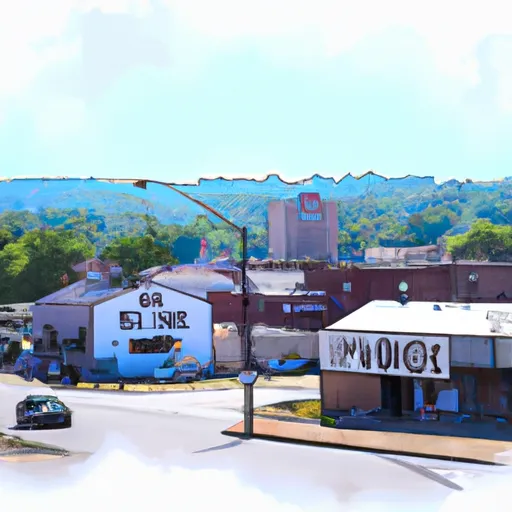-
 Snoflo Premium
Snoflo Premium
Get unlimited access to all our content
With no Ad interruptions! - Start Your Free Trial Login with existing account
Poyen
Eden Index
Climate
7.7
•
Recreation
1.1
•
Community
1.9
•
Safeguard
3.9/10

Poyen, Arkansas is a small rural town located in Grant County. Situated in the southern part of the state, Poyen experiences a humid subtropical climate with hot and humid summers and mild winters. Average high temperatures in the summer range from the upper 80s to mid-90s Fahrenheit, while winter temperatures can dip into the upper 30s to low 40s.
Hydrologically, Poyen is part of the Ouachita River watershed, with several creeks and small streams running through the area. The Caddo River, known for its scenic beauty and recreational opportunities, flows just east of Poyen.
Outdoor enthusiasts visiting Poyen can enjoy various recreational activities. The Caddo River offers opportunities for fishing, canoeing, kayaking, and swimming. The nearby Ouachita National Forest provides extensive hiking trails, camping sites, and hunting opportunities for nature lovers. Lake DeGray, a short drive away, offers boating, fishing, and water sports activities. Additionally, Poyen is surrounded by picturesque farmlands, making it a great place for scenic drives and wildlife spotting.
In conclusion, Poyen, Arkansas offers a pleasant climate, access to waterways, and ample outdoor recreational opportunities, making it an attractive destination for those seeking natural beauty and outdoor activities.
What is the Eden Index?
The Snoflo Eden Index serves as a comprehensive rating system for regions, evaluating their desirability through a holistic assessment of climate health, outdoor recreation opportunities, and natural disaster risk, acknowledging the profound impact of these factors on livability and well-being.
Climate Health Indicator (CHI): 7.7
Poyen receives approximately
1363mm of rain per year,
with humidity levels near 84%
and air temperatures averaging around
17°C.
Poyen has a plant hardyness factor of
8, meaning
plants and agriculture in this region tend to thrive here all year round.
By considering the ideal temperature range, reliable water supplies, clean air, and stable seasonal rain or snowpacks, the Climate Health Indicator (CHI) underscores the significance of a healthy climate as the foundation for quality living.
A healthy climate is paramount for ensuring a high quality of life and livability in a region, fostering both physical well-being and environmental harmony. This can be characterized by ideal temperatures, reliable access to water supplies, clean air, and consistent seasonal rain or snowpacks.
Weather Forecast
Streamflow Conditions
Lower Ouachita
Area Rivers
Lower Ouachita
Snowpack Depths
Lower Ouachita
Reservoir Storage Capacity
Lower Ouachita
Groundwater Levels
Recreational Opportunity Index (ROI): 1.1
The Recreational Opportunity Index (ROI) recognizes the value of outdoor recreational options, such as parks, hiking trails, camping sites, and fishing spots, while acknowledging that climate plays a pivotal role in ensuring the comfort and consistency of these experiences.
Access to outdoor recreational opportunities, encompassing activities such as parks, hiking, camping, and fishing, is crucial for overall well-being, and the climate plays a pivotal role in enabling and enhancing these experiences, ensuring that individuals can engage in nature-based activities comfortably and consistently.
Camping Areas
| Campground | Campsites | Reservations | Toilets | Showers | Elevation |
|---|---|---|---|---|---|
| Evangeline Camp Complex | 14 | 158 ft | |||
| Rapides Coliseum | None | 78 ft | |||
| Valentine Lake South Shore | None | 176 ft | |||
| Valentine Lake North Shore | 14 | 156 ft | |||
| Crooked Creek Rec Area | None | 103 ft | |||
| Indian Creek Recreation Area | None | 105 ft | |||
| John Blank Sportsman Park | None | 14 ft | |||
| Cotile Rec Area | 100 | 164 ft | |||
| Kincaid Complex | 272 | 164 ft | |||
| Loran Site Complex | 30 | 230 ft |
Nearby Ski Areas
Catastrophe Safeguard Index (CSI):
The Catastrophe Safeguard Index (CSI) recognizes that natural disaster risk, encompassing floods, fires, hurricanes, and tornadoes, can drastically affect safety and the overall appeal of an area.
The level of natural disaster risk in a region significantly affects safety and the overall livability, with climate change amplifying these risks by potentially increasing the frequency and intensity of events like floods, fires, hurricanes, and tornadoes, thereby posing substantial challenges to community resilience and well-being.
Community Resilience Indicator (CRI): 1.9
The Community Resilience Indicator (CRI) recognizes that education, healthcare, and socioeconomics are crucial to the well-being of a region. The CRI acknowledges the profound impact of these elements on residents' overall quality of life. By evaluating educational resources, healthcare accessibility, and economic inclusivity, the index captures the essential aspects that contribute to a thriving community, fostering resident satisfaction, equity, and social cohesion.

